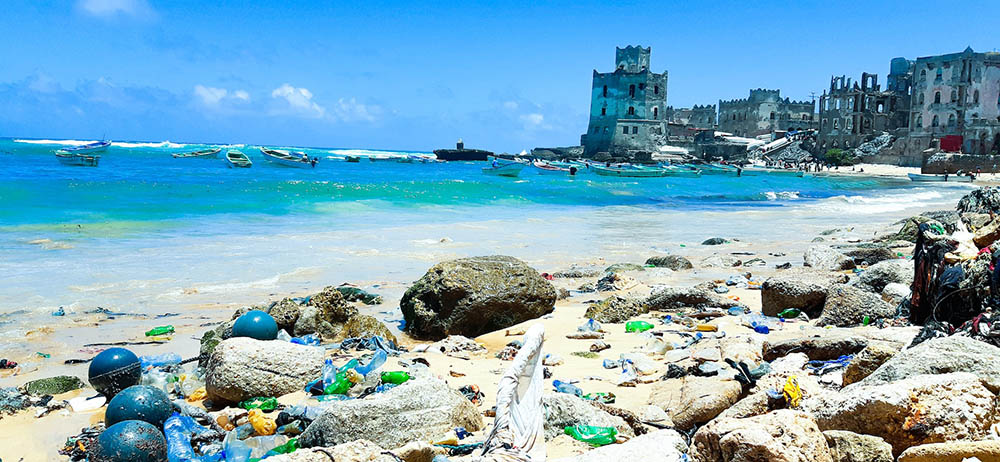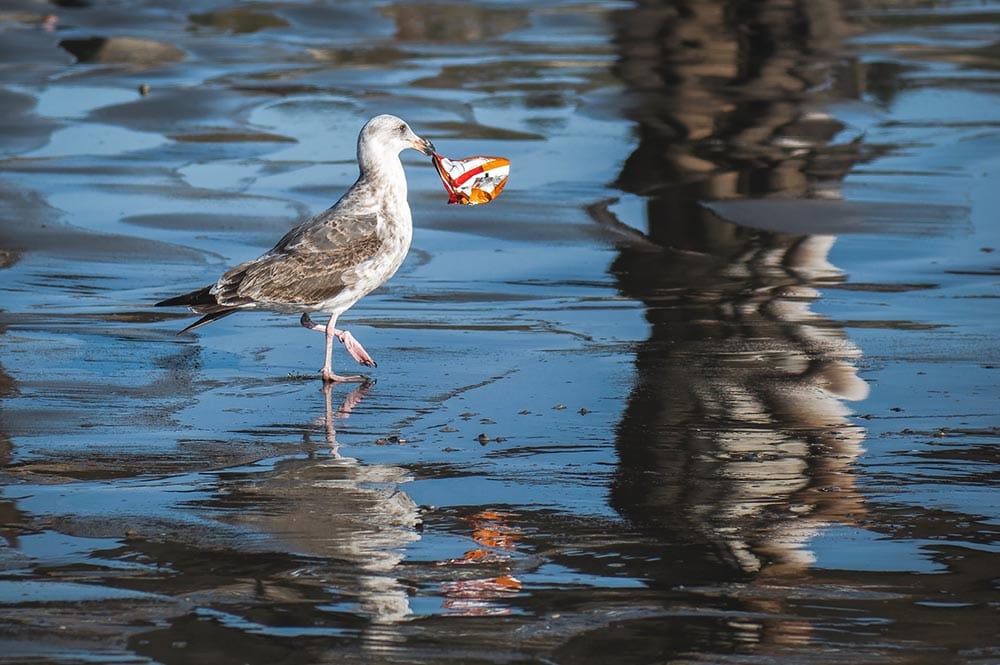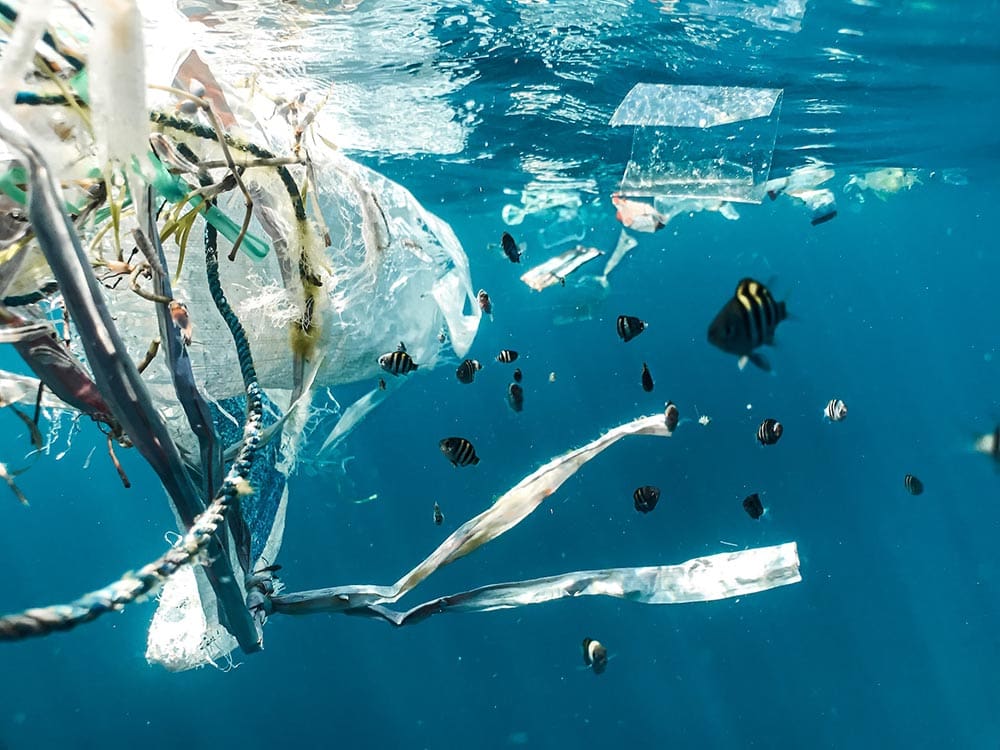Scientists first became aware of the oceans’ plastic pollution problem in the late 1960s, and in 1965, the first plastic bag was recovered off the coast of Ireland. However, the bag was an accidental discovery; it was tangled around a continuous plankton recorder (CPR). CPRs are towed behind ships to collect plankton and determine if the surveyed areas have healthy ecosystems. When the recorders collect a significant amount of plankton, the researchers can assume that the marine animals that depend on it are healthy and abundant.
Although CPRs have been dragged behind large ships since 1931 to collect plankton, the devices also provide a record of plastic pollution. When the CPR ensnares a plastic bag or net, the recorder has to be removed from the water and adjusted. Each time that plastic is removed, a technician records the time and date. By examining the logbook of the CPR in 1965, today’s researchers have determined that the plastic contamination of the seas occurred much earlier than previously thought.

What Else Have CPRs Revealed About the History of Plastic Pollution?
CPRs are large metal boxes with a tiny hole on the bow (front of the device) that traps small volumes of water in a reservoir. Ever since survey companies began keeping logs of CPR collections in the 1950s, researchers can examine how quickly plastic pollution has increased since the early discoveries. Although the bag found in 1965 marks the beginning of the ocean’s battle with plastic products, an earlier discovery highlighted another type of plastic pollution that has become a troubling issue for marine life.
In 1957, a CPR collected a used plastic fishing line. Discarded fishing lines and plastic nets can trap and kill fish and other marine organisms, but until the 1960s, the scope of the problem was not apparent. Each year, up to 1 million tons of plastic fishing gear are dumped into the ocean, and CPR records indicate that the “ghost fishing gear” contamination has increased at an alarming rate since 1990.
While single-serving plastic products like cups, straws, and bottles are primary contributors to ocean pollution, the number of plastic bags recovered decreased in the early 2000s. It’s unclear why fewer plastic bags are collected, but some suggest that stricter regulations and the public’s growing concern about disposable plastic have led manufacturers to produce fewer bags. Researchers use multiple high-tech devices to monitor the ocean and the status of marine creatures, but the 90-year-old CPR is still an effective tool for establishing a pollution timeline.

How Does Plastic Harm the Ocean?
Photos and films of birds, turtles, and seals trapped in old fishing nets have enraged the public since the 1980s, but the problem has only worsened. Around 10% of the total amount of plastic in the ocean comes from discarded fishing gear, and close to half of the Great Pacific Garbage Patch (between California and Japan) is composed of ghost nets and lines.
The World Wildlife Fund (WWF) has identified ghost gear as the deadliest type of plastic pollution for marine life. Plastic fishing nets, like most plastic products, do not biodegrade. They can stay in the water for centuries if they’re not removed. Once a net is dumped in the sea, it can continuously kill marine animals for several years. Here are a few of the marine organisms that old fishing nets have killed:
- Seals
- Seabirds
- Sharks
- Whales
- Dolphins
- Turtles
- Crabs
- Fish
Since 1997, the number of marine creatures entangled in plastic or that have consumed it has doubled. The WWF estimates that 557 species are affected by used fishing gear, and the ghost equipment also adversely affects the fishing companies using it. Although some of it is intentionally discarded, several traps and nets are lost every year due to poor weather conditions. At one Canadian crab fishery, the owners spent $490,000 yearly replacing lost nets.
Instead of dissolving into the water over time, plastic breaks apart into tiny pieces. The minute particles are ingested by aquatic animals, and some of them are then consumed by humans. By 2018, researchers had identified microplastic in the bodies of 114 marine species, and a 2020 survey estimated that over 14 million metric tons of microplastic sit on the ocean floor.
Plastics are petrochemicals, but each type has a unique chemical composition. They contain phthalates, such as polybrominated diphenyl ether and bisphenol A. The chemical additives are responsible for disrupting the hormones of organisms in terrestrial and marine environments, and when plastic settles in the ocean, the phthalate concentration in that area increases by up to a million times. Phthalates can also affect the thyroid hormones in humans when they consume contaminated marine creatures; children and those who are pregnant are at greater risk of complications from the additives.

Possible Solutions to Ocean Pollution
Although fishing gear by weight is more plentiful in the ocean than other plastics, microplastic particles are present in every ocean and have even been detected in sea ice. Due to the extraordinary volume of microplastics, environmentalists contend that attempting to remove the waste is impractical. Plastic production could double in 10 years, and since only a small percentage will be recycled, the rest will undoubtedly end up in the oceans.
As a global problem, plastic pollution and dumping cannot be resolved by a few wealthy countries. A united effort from every nation is needed to reduce plastic production, impose fines and criminal charges against polluters, prosecute illegal fishing operators, develop safer fishing equipment, and improve plastic recycling technology.
However, progress has been made in removing some of the plastic nets and microplastics from the Great Pacific Garbage Patch. A non-profit group based in the Netherlands, the Ocean Cleanup, has developed a massive U-shaped cleaning system designed to eradicate the massive heap, and the company claims that they will reduce the size of the “Patch” by half every 5 years.
On a smaller scale, a floating skimmer called the Seabin has been deployed near marinas and ports to remove plastic and oil from the surface of the water. So far, 860 Seabins around the world have collected over 3,191,221 kilograms of plastic waste.

Final Thoughts
Although the seas are polluted with plastic and other contaminants, plastic production is only expected to increase in the next decade. Aquatic animals can perish in abandoned fishing gear, and a large percentage of the oceans’ inhabitants consume microplastics as part of their daily meals. Removing the contaminants will benefit marine life, but to save the oceans, plastic dumping must be regulated, production must be reduced, and violators must be prosecuted in every nation.
Featured Image Credit: Naja Bertolt Jensen, Unsplash
